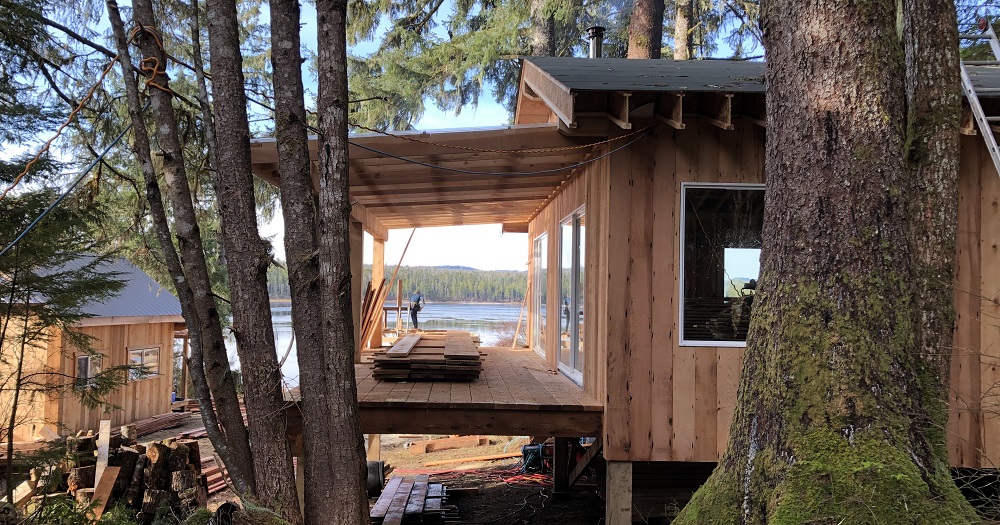On a calm mid-February day, a boat carrying Heiltsuk members and out-of-town visitors travels quickly across
Seaforth Channel to the site of the new Qíɫcutkv (Kunsoot) Wellness Centre.
Sheets of ice scatter as the boat enters the inlet to Kunsoot and shatters its fragile surface. Qqs Projects Society executive director Jessie Housty gestures to the passing shoreline. “At one point, 18 smokehouses lined the inlet here.” This is a place of cherished memories, she says, where Heiltsuk families have gathered to hold picnics, pick berries and harvest and smoke fish.
The Kunsoot Wellness Centre was identified as a need for the community in 2018 and is now nearing its first phase
of completion. The Centre promises to deliver healing and wellness programs on the land year-round and offers “a
beacon of resilience in the face of trauma and crisis.”
The name “Kunsoot” comes from a very old dialect of Heiltsuk language, Housty explains, meaning “an abundance of salmon in the fish traps.” The inlet is still home to pink and chum salmon. An old stone fish trap is visible below the tideline. At the wellness centre site, Housty’s father Larry Jorgenson offers visitors a tour; among them are Dr. Hayden King, executive director of the Yellowknife Institute, and Gwich’in lawyer Kris Statnyk. Both have traveled to Bella Bella to attend a healing ceremony later that day for Heiltsuk member Max Johnson and his family.
The facility is designed to be as low-impact as possible, explains Jorgenson. He outlines plans for solar panels and
creek micro-hydro, composting sewage, locally-milled lumber and organic gardens. Newly-constructed cabins are nestled in a grove of sun-filtered hemlock, spruce and cedar. A cookhouse offers expansive views of ocean and forest. The pungent smell of fresh-sawn cedar fills the air.
“I’m excited to have a space where we can align our programs with the cycles and seasons,” Housty enthuses. “To have a space we can use year-round.” She says a wide range of community groups were asked to help implement a plan for the centre. “We’re building a space where people will hopefully see themselves and their ideas reflected all around them,” she adds
Priorities include a residential space for people awaiting addictions treatment; school trips for students; a safe house for people experiencing domestic violence; and a meeting space for Heiltsuk matriarchs.
Kunsoot will also offer programs in cedar bark weaving, medicinal plants harvesting, traditional tea-making, and berrypicking for jam-making. Local hunters have been asked to teach kids to hunt and process ducks and geese.
“It’s really important to us that we’re not just relocating clinical health services,” says Housty. “It’s about going out to Kunsoot and learning about who we are.” Bringing together a wide range of groups to manage the space has been an exciting challenge. “The thing I really love is the amount of time we’re able to say yes to community members and we’re really able to innovate,” she says. “People don’t often get to hear that.”
The wellness centre society is seeking $1-million in funds to complete the project. The coronavirus pandemic has
also caused delays to construction and the launch of spring programs. While that’s disappointing, Housty emphasizes, “our community’s safety is our priority.”


